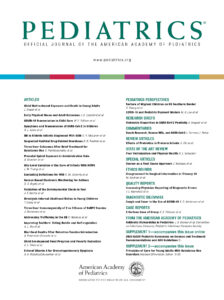
This supplemental issue provides the evidence used to develop the WHO recommendations for care of the preterm or low-birth-weight infant.
In 2010, many research gaps in the care of preterm and low birth weight (LBW) infants were identified. Important questions about the efficacy and effectiveness of interventions for preterm and LBW infants have been answered over the last 10 years, yet gaps in the global evidence base remain. A framework of care needed for preterm and LBW infants was developed at a World Health Organization (WHO) guideline development group expert meeting in December 2020. Thirty-eight interventions were identified. Thirty interventions had already been included in other WHO guidelines. Eight interventions with 24 research questions had not been addressed by other WHO guidelines.
An overview of the systematic reviews process was conducted (as outlined in paper 1 of this supplement), to understand which systematic reviews, if any, had addressed the 24 research questions in the last 3 years. Eight had already been addressed by published systematic reviews (donor human milk, multicomponent fortifier, formula milk, probiotics, emollients, use of continuous positive airways pressure [CPAP] in infants with respiratory distress syndrome, early initiation of CPAP, and prophylactic CPAP). Sixteen required new systematic reviews (kangaroo mother care, mother’s own milk, early initiation, responsive feeding, advancement of feeding, duration of exclusive breastfeeding, iron, zinc, vitamin A, vitamin D, calcium and phosphorous, multiple micronutrients, methylxanthines, family involvement, and family support).
The sixteen systematic reviews were subsequently completed. Four have been published elsewhere (kangaroo mother care, CPAP pressure source, methylxanthines, family support). Twelve are presented in this supplement. These reviews fill a much-needed gap in the evidence base. They can be used by the global public health community to (1) understand the impact, research priorities, and implementation considerations and (2) assist in the development of policies and programs to improve the care of these most vulnerable preterm and LBW infants.
All fourteen supplemental articles can be found here.